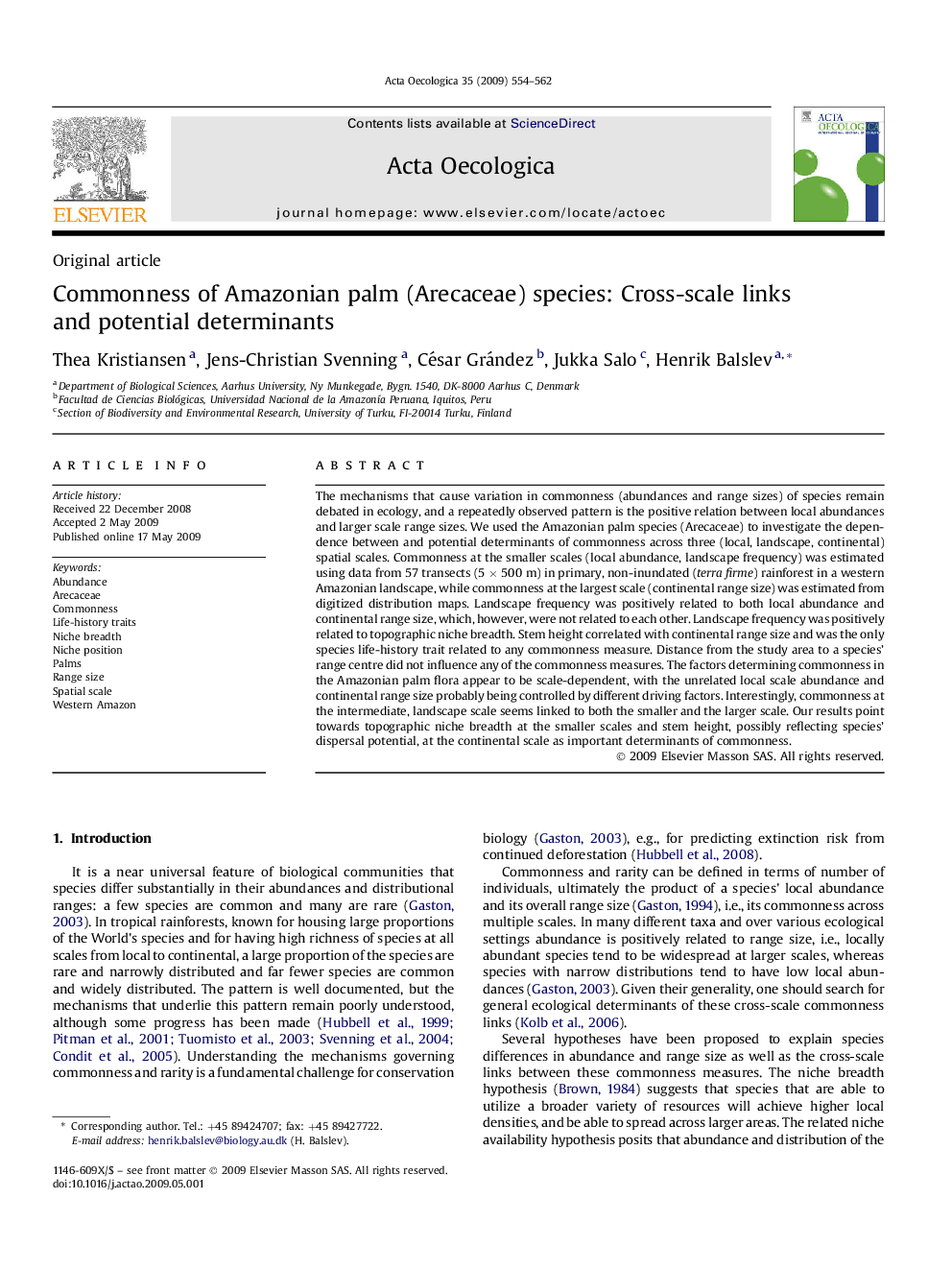| Article ID | Journal | Published Year | Pages | File Type |
|---|---|---|---|---|
| 4381218 | Acta Oecologica | 2009 | 9 Pages |
The mechanisms that cause variation in commonness (abundances and range sizes) of species remain debated in ecology, and a repeatedly observed pattern is the positive relation between local abundances and larger scale range sizes. We used the Amazonian palm species (Arecaceae) to investigate the dependence between and potential determinants of commonness across three (local, landscape, continental) spatial scales. Commonness at the smaller scales (local abundance, landscape frequency) was estimated using data from 57 transects (5 × 500 m) in primary, non-inundated (terra firme) rainforest in a western Amazonian landscape, while commonness at the largest scale (continental range size) was estimated from digitized distribution maps. Landscape frequency was positively related to both local abundance and continental range size, which, however, were not related to each other. Landscape frequency was positively related to topographic niche breadth. Stem height correlated with continental range size and was the only species life-history trait related to any commonness measure. Distance from the study area to a species' range centre did not influence any of the commonness measures. The factors determining commonness in the Amazonian palm flora appear to be scale-dependent, with the unrelated local scale abundance and continental range size probably being controlled by different driving factors. Interestingly, commonness at the intermediate, landscape scale seems linked to both the smaller and the larger scale. Our results point towards topographic niche breadth at the smaller scales and stem height, possibly reflecting species' dispersal potential, at the continental scale as important determinants of commonness.
